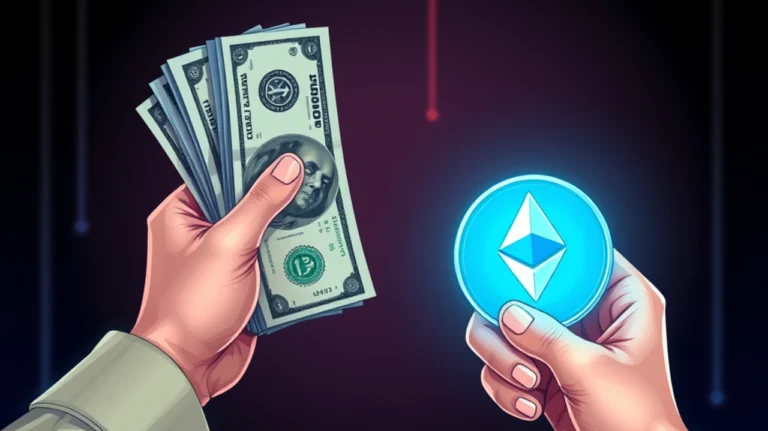The Future of Tron: Will TRX Become a Crypto Giant?
Tron (TRX) has rapidly cemented itself as one of the most dynamic blockchain platforms in the global crypto landscape.
Built with a core focus on transaction speed and low fees, Tron offers a unique approach by enabling a decentralized content ecosystem.
This strong technological foundation, combined with sustained growth in DeFi, NFTs, and the broader Web3 movement, positions Tron as a compelling project to watch for the long term.
Given the increasingly complex and fast-evolving blockchain ecosystem, projecting the future price of TRX is no simple task.
Nevertheless, numerous analysts and institutions have ventured to forecast TRX’s potential value by 2050—ranging from conservative, more grounded estimates to optimistic outlooks suggesting explosive growth.
Principal Conclusions
Hide-
Tron continues to expand its ecosystem through strategic acquisitions like BitTorrent and robust support for decentralized applications (dApps), fueling long-term growth.
-
Conservative projection: Around $8.99 per TRX by 2050.
-
Moderate projection: Between $25.44 and $28.35.
-
Optimistic projection: Ranges from $248.99 to $287.59 for high-risk, long-term investors.
-
Key factors: Adoption in DeFi and NFT sectors, blockchain competition, global regulations, and Tron’s pace of technological innovation.
This article breaks down those scenarios through a multi-faceted lens of technical and fundamental analysis, while also considering ecosystem dynamics and external market factors that may shape TRX’s trajectory.
The Evolution of Tron and Its Technological Foundations
Launched in 2017 by Justin Sun, Tron was built on a bold vision: to democratize the digital content industry by eliminating intermediaries like centralized media platforms.
This vision came to life through a blockchain infrastructure designed to be fast, scalable, and cost-effective—three core traits that are essential for the next generation of Web3 and DeFi applications.
Three-Layer Architecture
Tron’s blockchain architecture is composed of three distinct layers: the Storage Layer, Core Layer, and Application Layer. Each plays a crucial role in delivering an efficient, scalable ecosystem:
-
The Storage Layer handles the preservation of blockchain data and status.
-
The Core Layer executes smart contracts and manages account-level operations.
-
The Application Layer enables developers to build decentralized applications (dApps) atop the protocol.
This layered structure ensures high performance and low gas fees—two factors that make Tron particularly attractive to developers seeking alternatives to costlier platforms like Ethereum.
BitTorrent Acquisition: A Pivotal Move
In 2018, Tron made a strategic move by acquiring BitTorrent, one of the world’s largest decentralized file-sharing platforms.
This acquisition granted Tron access to a massive user base, significantly enhancing its reach. More than that, it introduced a novel model for decentralized content distribution—potentially disrupting the global entertainment and streaming industries.
Tron evolved from a transactional network into a backbone for decentralized content infrastructure on a global scale.
Long-Term Factors Influencing TRX’s Price
When it comes to long-term crypto valuation, it’s not enough to rely solely on charts or technical indicators.
Several interconnected dimensions determine an asset’s value—including its use case, adoption trends, regulatory environment, and competitive position.
Adoption in DeFi and NFTs
One of Tron’s major advantages is its low-cost, high-speed network—ideal conditions for decentralized finance (DeFi) protocols.
Numerous staking platforms, yield farming projects, and stablecoin initiatives now operate on Tron, attracted by its operational efficiency.
The NFT sector is also booming on Tron. The platform has shown consistent growth in NFT trade volume over recent years, indicating rising utility and artistic appeal within its digital marketplace.
Blockchain Competition
Tron isn’t the only contender in the blockchain race. It faces stiff competition from major players like Ethereum, Cardano, and Polkadot—each offering unique value propositions:
-
Ethereum boasts a mature ecosystem and robust security but continues to struggle with high transaction fees, despite efforts through Layer-2 scaling solutions.
-
Cardano takes a research-driven approach and uses the energy-efficient Ouroboros consensus, though its DeFi adoption still lags behind Tron.
-
Polkadot emphasizes cross-chain interoperability, an area where Tron remains more focused on content and media applications.
Ultimately, technology innovation and community development will determine which platforms prevail over time.
Regulation and Government Policy
Regulatory dynamics often go overlooked by retail investors, yet they are critical. Policies from key nations like the U.S. and China heavily influence global crypto sentiment.
With a strong presence in the Asian market, Tron could face both positive and negative regulatory shocks.
On the flip side, the growing legalization of DeFi and crypto in developing nations could unlock new opportunities for Tron.
Countries with less inclusive financial systems are often more receptive to blockchain-based innovation.
TRX Price Projections for 2050: Three Scenarios
Here are three future price scenarios for TRX based on different market models and assumptions:
| Scenario | Projected Price (USD) | Source & Notes |
|---|---|---|
| Conservative | $8.99 | Bitget projects this value under steady, non-speculative growth. Estimated ROI: +3191.9% from current levels. |
| Moderate | $25.44 – $28.35 | Finance Shots predicts this range using long-term technical trends and historical analysis. |
| Optimistic | $248.99 – $287.59 | CryptoDisrupt sees this as achievable through massive DeFi and NFT adoption, plus dominance in decentralized content. |
Each scenario reflects a different risk appetite and expectation level. The conservative outlook is ideal for stability-minded investors, the moderate forecast suggests healthy long-term growth, while the optimistic scenario appeals to high-risk, high-reward visionaries betting big on Tron’s long-term dominance.
Strategic Comparison with Other Blockchain Platforms
To better understand Tron’s positioning, it helps to look at how it compares with other leading networks:
-
Ethereum (ETH): While Ethereum leads in developer tools and overall security, high gas fees remain a challenge. If Layer-2 scaling succeeds, it could weaken Tron’s low-cost advantage.
-
Cardano (ADA): With a focus on scientific research and long-term sustainability, Cardano offers robust infrastructure, but its slower DeFi rollout makes it less aggressive than Tron.
-
Polkadot (DOT): Renowned for its multi-chain interoperability, Polkadot is still in early stages of mainstream adoption. Tron, meanwhile, has a clearer niche in decentralized entertainment and content delivery.
Conclusion: TRX and the Road to 2050—A Balancing Act of Risk and Vision
Predicting the value of a digital asset like TRX decades into the future is akin to navigating through fog with only a partially drawn map.
Technological breakthroughs, regulatory shifts, and global economic trends can all drastically alter the landscape. Yet, using scenario-based models offers a structured way to evaluate possibilities.
Tron holds many of the right ingredients for long-term success: a robust tech stack, a loyal and growing community, a large user base (thanks in part to BitTorrent), and a strong foothold in DeFi and NFT markets.
If Tron can maintain its pace of innovation and effectively respond to regulatory changes, there’s little doubt it could emerge as one of the dominant forces in the blockchain space by mid-century.
For investors, the key lies in understanding their risk tolerance, thinking long-term, and remaining resilient through crypto’s inherent volatility.
Holding TRX through to 2050 isn’t just a speculative bet—it could be a strategic play on the future of decentralized content and global digital finance.
Frequently Asked Questions (FAQs)
Why are crypto price predictions so varied?
Because prediction models rely on vastly different assumptions about adoption rates, regulations, and macroeconomic conditions.
Is Tron still relevant despite the emergence of newer platforms?
Yes. Tron continues to expand through acquisitions like BitTorrent and by supporting an active dApp ecosystem, reinforcing its presence in decentralized content delivery.
How do regulations affect TRX’s price?
Strict regulations can negatively impact market sentiment, while regulatory clarity or legalization in emerging markets could unlock new demand and boost TRX’s value.
Are there macro factors that TRX investors should monitor?
Absolutely—global inflation, central bank interest rate policies, and institutional investor sentiment all significantly influence long-term crypto valuations.
Should I buy TRX now to benefit from potential 2050 gains?
That depends on your investment goals, risk appetite, and portfolio strategy. Always consult a financial advisor before making any long-term investment decisions.







